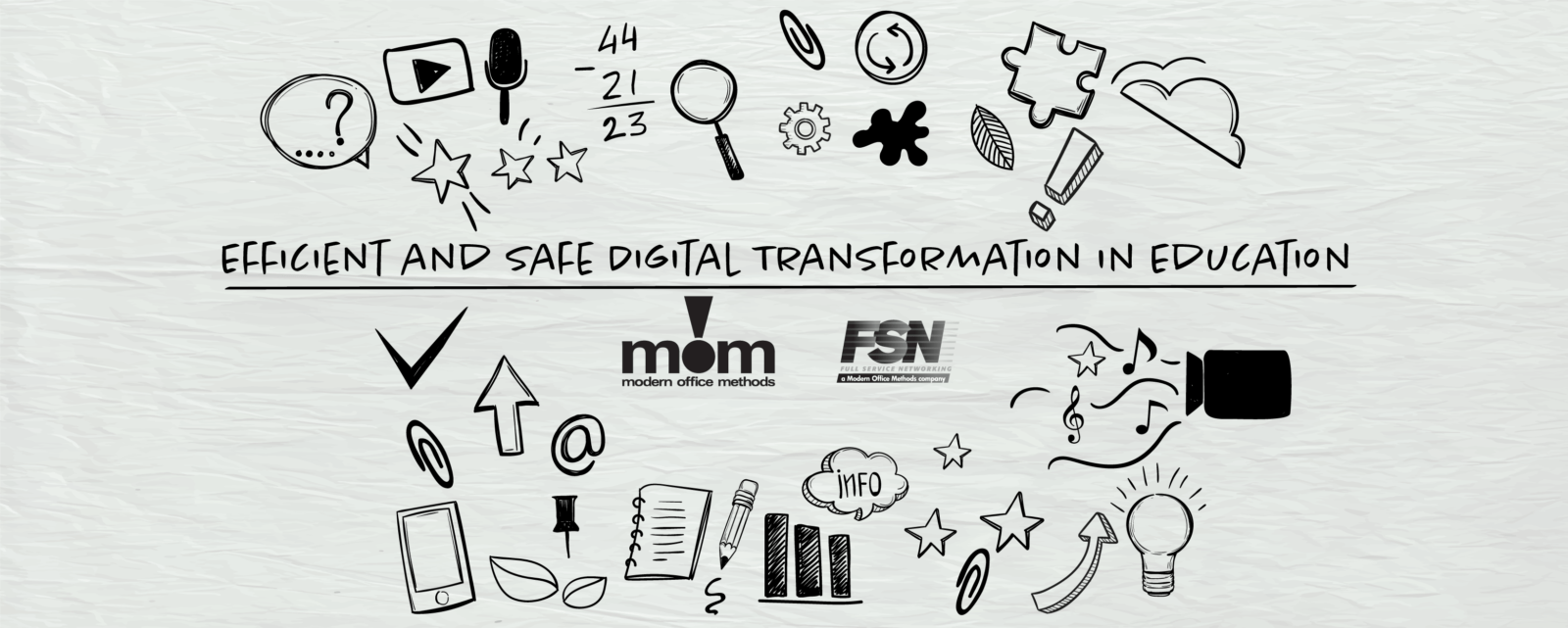Digital transformation is assisting in delivering more impactful and effective learning experiences more than ever before, especially in the education sector. From K-12, to some of the largest universities, digital technology has introduced devices such as iPads and Chromebooks, the internet and even more immersive means of learning such as augmented reality into the classroom. Most recently the transformation in education has come in the form of home elearning. Many parents are being tasked with homeschooling their children while balancing their own work for their jobs. This rapid digital transformation in education came whether the schools were prepared or not and we’re positive that like other industries, education institutions look forward to getting things back to the way they were prior to the COVID-19 pandemic.
Educause notes that “… digital transformation means transforming an organization’s core business to better meet customer (students, parents, faculty, staff, alumni, etc.) needs by leveraging technology and data.” Educational institutions must also use digital transformation to influence their administration and regulatory compliance efforts to more effectively support the core business of education in a positive manner.
2 important ways educational entities can improve administration and compliance efforts are by:
- Effectively managing the large amount of data and information already in the system as well as that which is being created daily.
- Enabling security processes and features on devices like MFDs and printers that will help education administrators better meet requirements of regulations like the Family Educational Rights and Privacy Act (FERPA), the General Data Protection Regulation (GDPR), or the California Consumer Protection Act (CCPA).
In a study done by Canon (Canon Lean Information Management and Governance Study), a high percentage of organizations reported positive/significantly positive business impact in updating of information (73%), regulatory compliance (77%), and security of information (79%) by more effectively managing their information and implementing information governance practices.
Managing information and data starts with digitizing as much of it as possible – especially information that continues to be created or distributed on paper. Using a multifunction device (MFD) or scanner to capture student materials (such as creative work, handwriting or paper-based tests), invoices or parental permission slips allows multiple ways to better manage and secure those types of information. Using optical character recognition (OCR) software and an information management software solution can help extract important details and create rules governing who has access to the information, how it is stored, and how long it is retained. Once digitized, information is much more easily searched for and found when needed.
Security, one of the top five digital transformation trends in education, helps keep students and other data private, again helping administrators meet privacy regulations. Additionally, implementing good information, data, and records security practices can lessen a costly breach that can cripple an institution’s ability to carry out its mission.
Ponemon reported in their “Cost of a Data Breach Report 2019” that the average cost of a data breach in the education sector was $4.8 million, or $142 per record. This total consists of direct and indirect costs including:
- Breach discovery costs
- Remediation costs
- Outsourcing costs to notify affected parties
- Future costs due to loss of business
- Other costs associated with the breach
Surprisingly, in the same report, almost 30% of organizations expect a data breach in the next two years and only 51% of education sector organizations have implemented security automation.
Even without security automation using artificial intelligence, machine learning, or automated incident reporting and response, there are many actions an educational sector administrator can take to help mitigate risk and make an institution’s digital transformation more secure. These include:
- Considering the replacement of any MFD, printer, scanner or copier that is more than five years old. Major security features are available in newer models.
- Upgrading to equipment that, at startup, verifies the boot code, OS, and applications running on the device have not been compromised.
- Ensuring new equipment has anti-virus/anti-malware software installed and activated in the device.
- Updating software and firmware on devices including MFDs and printers, making sure updates are digitally signed from the manufacturer.
- Enforcing authentication on MFDs, printers, laptops and PCs.
- Encrypting files in a digital information system and data going between a computer and any printing device.
- Shredding files that are at the end of their life and not needed any longer.
- Finally, engaging a professional reseller to help conduct a security audit to identify security gaps and determine solutions to fill those gaps.
Digital transformation is a journey and not a destination. Managing information and data security practices along the way makes the journey safer and more efficient.


Leave A Comment
You must be logged in to post a comment.